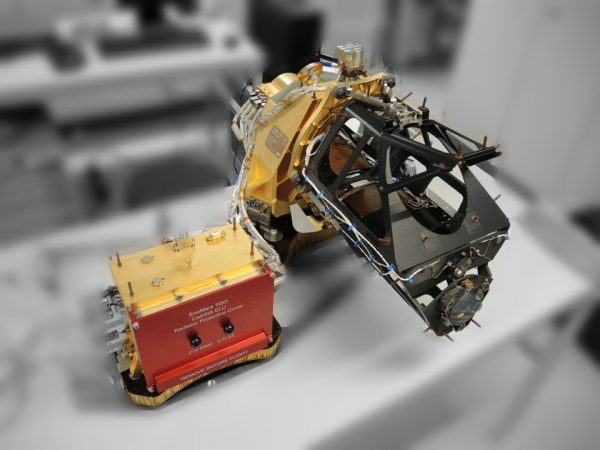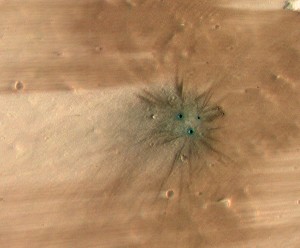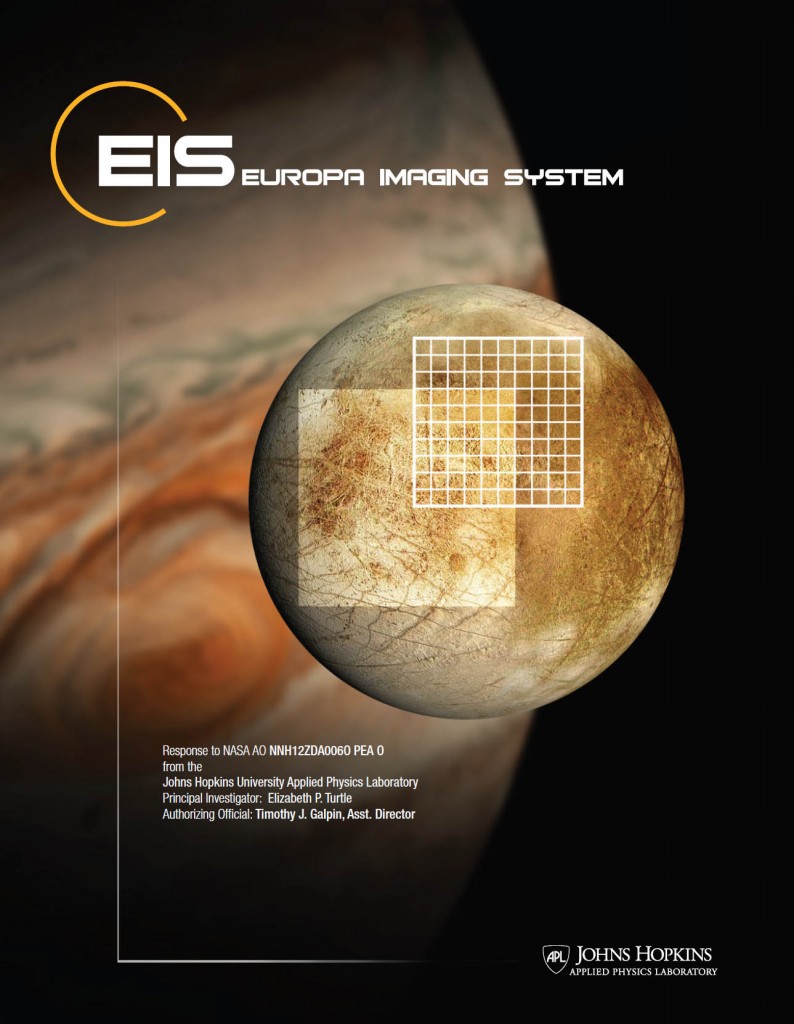Solar system remote sensing
General Objectives
Ices are ubiquitous in our solar system and beyond. Water ice is found at mid and high latitudes on Mars, throughout the giant planet satellite systems (e.g. Europa, Ganymede, and Enceladus), in comets, and possibly as sub-surface deposits on the Moon and Mercury. Ices are important in the formation process and in determining the habitability of planets.
Our aim is to improve knowledge of the physical properties of ices and of planetary surfaces that contain a significant ice content. We are 1) extending the capabilities of our current ice lab by adding study of the sublimation and gas outflow from dust-ice mixtures (LOSSy) and 2) setting up an analysis lab. for data exploitation (LAPIS). Knowledge gained, will be applied to putative proto-planetary objects (e.g. comets), to sublimation atmospheres (e.g. Mars), to evolved objects (e.g. Europa) and proto-planetary discs (project 1).
Impact crater on Mars imaged with the HiRISE imaging system on the Mars Reconnaissance Orbiter (ESP_011610_1825).
Sub-Projects
Laboratory for Outflow Studies of Sublimating Material (LOSSy)
Dr. Antoine Pommerol
The LOSSy programme is designed to study dirty ices in the lab.
Laboratory for Analysis of Planetary and Interplanetary DataSets (LAPIS)
Prof. Nicolas Thomas
The LAPIS programme looks at Solar System remote sensing data sets.
Initial Project Participants
The lead for this project is the Planetary Imaging Group (PIG) at the University of Bern. The PIGs host a web site which shows all their activities including participation in missions and numerical modelling work. The PIGs are supported for the LAPIS sub-project by the Swiss Space Center which is connected to EPFL in Lausanne.
Things Going On
CaSSIS

The CaSSIS instrument has been successfully integrated to the ExoMars Trace Gas Orbiter and launched from Baikonur. The on-ground calibration data is being analysed by Project 4 PhD student Vicky Roloff and a publication has been submitted.
TGO is now in orbit and is taking data. You can keep up with all CaSSIS activities by going to the specific web site for CaSSIS.
MiARD
The Project 4 team is part of a team that has been awarded a Horizon 2020 project called MiARD. The aim of this project is to perform a joint analysis of Rosetta data by combining the data from a number of instruments. The team is coordinated by Uni Bern and includes scientists from Germany, France, the UK, and Switzerland. NCCR PhD student Raphael Marschall participates in this work by studying the gas and dust distribution in the inner coma. NCCR Associate Clemence Herny is funded through MiARD to look at the thermal behaviour of the comet’s surface.
MiARD has its own web site (we have to have one…. it’s EU rules) where you can follow what is done.
The Europa mission
The EIS proposal for NASA’s Europa mission was selected for flight and Project 4 people will be active in the definition of the instrument and science.



